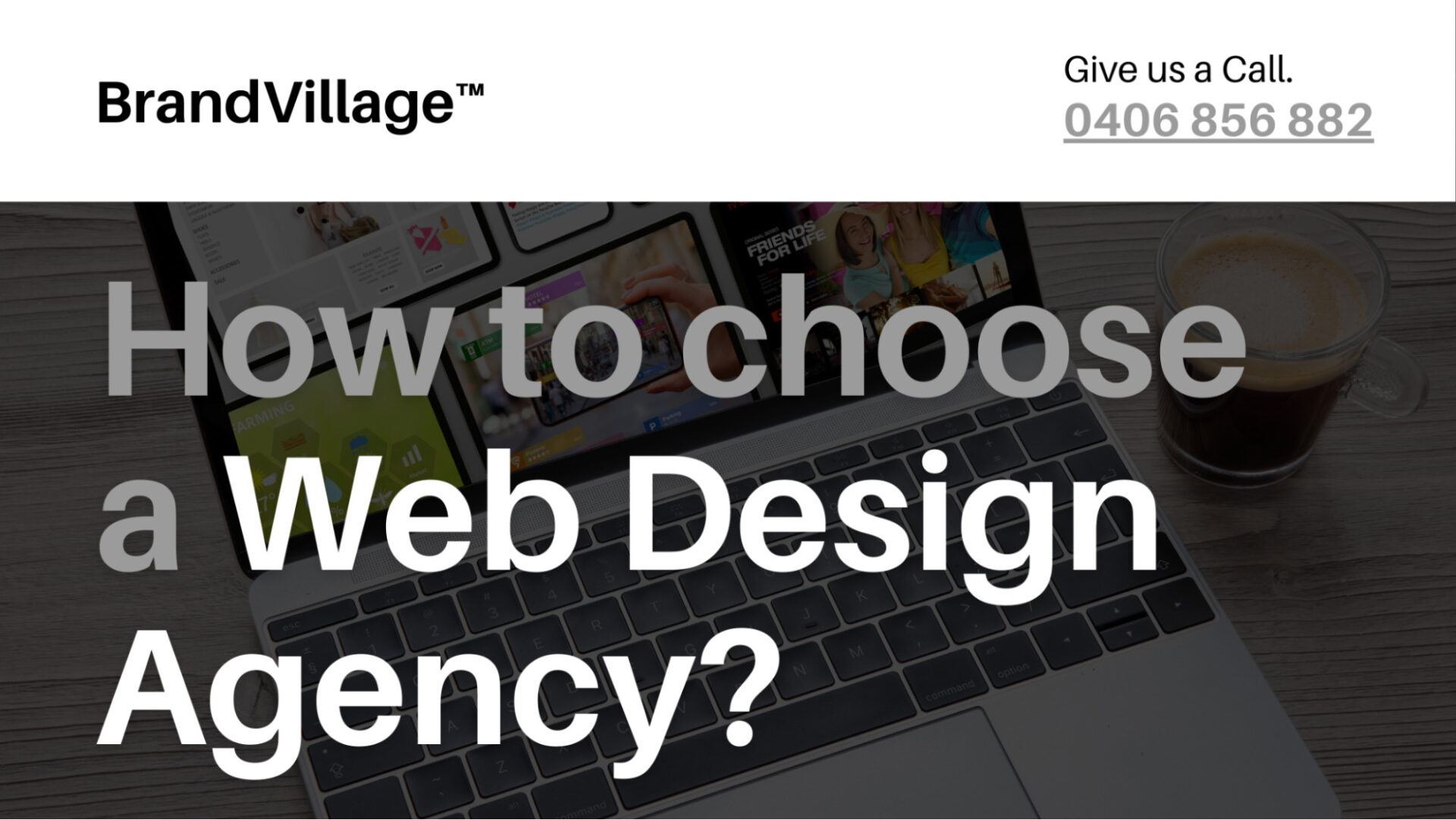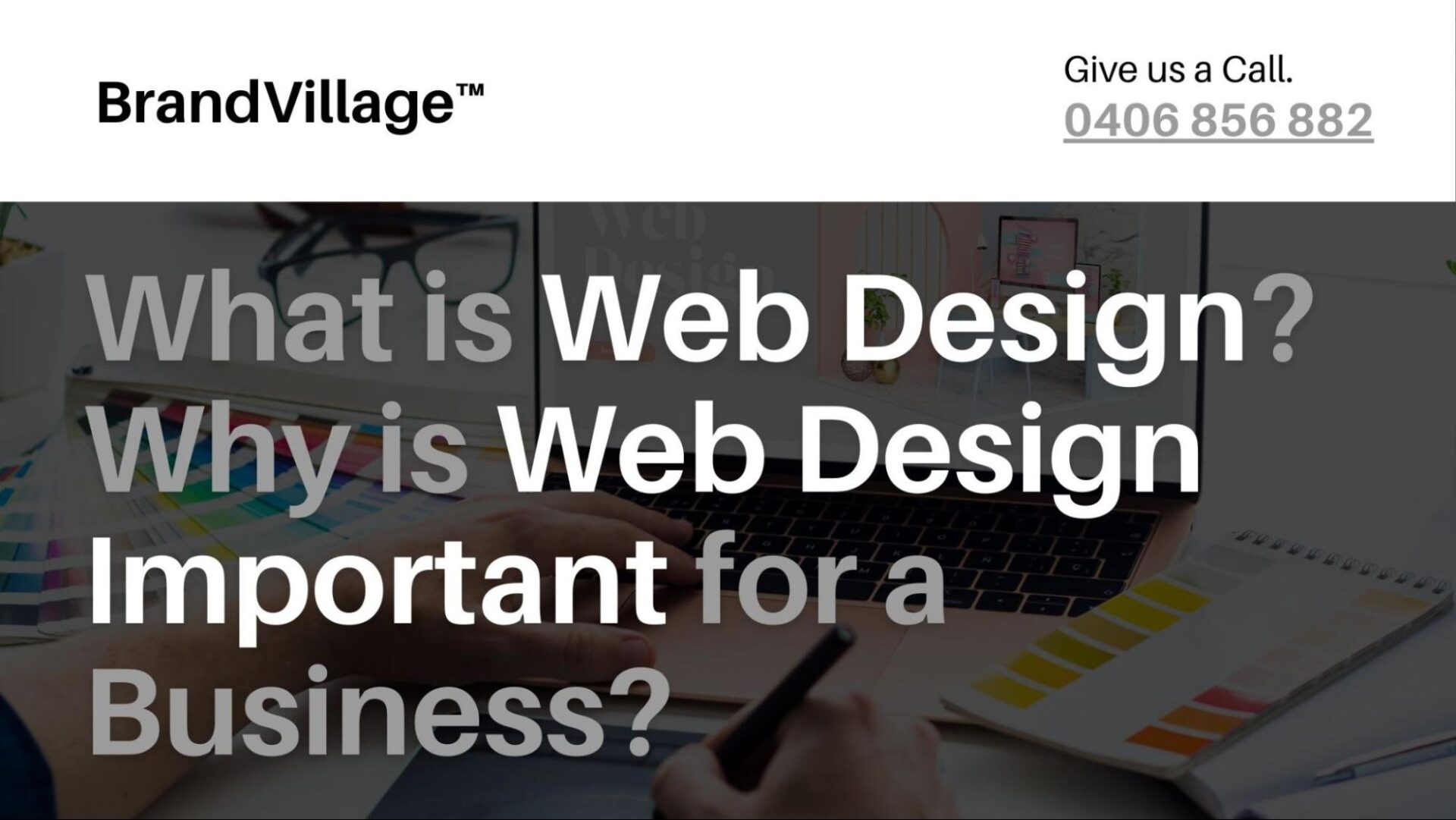What are the Web Design Misconceptions?

Published: May 6, 2024
Have you ever wondered why some websites look great but don’t keep users coming back? This often happens because of common mistakes people think are good ideas in web design. In simple terms, BrandVillage, web design services in Melbourne, focuses on making websites that not only look good but also work well in keeping visitors interested and engaged. They make sure each site is easy to use and helps businesses connect better with their customers.
Myth 1: Design is just about being pretty.
Truth: Design isn’t only about looking good. It’s about creating a smooth and easy experience for users to find their way around and interact. This means thinking about how useful and accessible the design is, and making sure it meets the needs of the people visiting the site. Good looks are important, but they should enhance functionality, not hinder it.
Myth 2: More is better.
Truth: Adding too many design elements like animations and fancy graphics can make a website feel cluttered and confusing. It’s better to use these elements wisely to avoid overwhelming visitors. The goal is to balance simplicity with functionality. Each element should have a purpose and contribute to the overall user experience.
Myth 3: Consistency isn’t important.
Truth: Keeping the layout, fonts, color schemes, and overall design consistent across all pages makes the site look professional and easy to navigate. Changes in style from one page to another can be confusing and make it hard for users to understand how to get around the site. Consistency also helps build trust and reinforces brand identity.
Myth 4: Mobile design can wait.
Truth: With most people browsing on their phones, mobile design should be a priority right from the start. A site that works well on various devices is essential today, not just for a good user experience but also for better search engine rankings. Designing with mobile in mind ensures that all features are accessible and functional on smaller screens.
Myth 5: Always follow design trends.
Truth: It’s good to know what the latest design trends are, but following them without considering what your website really needs can do more harm than good. Design choices should be based on research and what works best for your visitors. Web Design Trends can be a source of inspiration, but they should not dictate your entire design strategy.

Myth 6: Content is more important than design.
Truth: Both content and design are crucial. Even the best content won’t be effective if the design is poor. Good design helps users find and engage with content easily. Effective design also makes content more digestible and appealing, enhancing the overall impact.
Myth 7: Websites should look the same on all browsers.
Truth: It’s impossible for a website to look exactly the same on all browsers because they process sites differently. The aim should be to make sure the site works well and feels similar across most browsers. Providing a consistent user experience across platforms ensures that no user feels disadvantaged.
Myth 8: White space is wasted space.
Truth: White space is a key part of design that helps highlight the most important parts of a page. It makes a site look clean and easy to read. Thoughtful use of white space can also help reduce visual clutter, making the important content stand out even more.
Myth 9: Multimedia elements are just distractions.
Truth: When used correctly, things like videos and animations can enhance a site’s appeal and communicate information more effectively. The key is to use these elements in a way that adds to the experience, not detracts from it. Appropriate use of multimedia can engage users more deeply and convey complex information quickly.
Myth 10: Design is a one-time thing.
Truth: Web design needs regular updates and changes based on user feedback and changes in technology. What works today might not work as well tomorrow, so it’s important to keep improving the design. Continual refinement based on real-world use ensures that a website remains relevant and effective.

Myth 11: User testing isn’t necessary.
Truth: Testing with real users is crucial. It shows how people actually use your site and what changes might improve it. Skipping this step can lead to a design that looks good but doesn’t work well for your visitors. Regular user testing helps refine the design to better meet user needs.
Myth 12: Design is all about personal taste.
Truth: While personal preferences do play a role, effective web design is based on established web design principles and practices that help meet user needs and support business goals. Design choices should be informed by data and user feedback, ensuring that the site appeals to its intended audience.
Myth 13: Accessibility is not essential.
Truth: Designing for accessibility is not optional. It ensures everyone, including people with disabilities, can use your site effectively. This not only meets legal requirements but also improves the overall user experience. Accessible design can lead to wider audience reach and better user satisfaction.
Myth 14: SEO and design are unrelated.
Truth: SEO and design go hand in hand. Elements like how fast a page loads and how easy it is to use can affect both search rankings and how users perceive the site. A strong SEO strategy integrated with thoughtful design leads to better site visibility and user engagement.
Myth 15: Branding doesn’t impact design.
Truth: A website often forms the core of a brand’s online presence. Effective web design should reflect and enhance the brand’s identity consistently. A well-branded website helps create a lasting impression on visitors and strengthens brand recognition.

Myth 16: One design fits all.
Truth: Every website has different needs based on its audience and goals. What works for one site may not work for another. Customising the design to meet these specific needs is key to success. Adapting the design to suit different audiences and goals can dramatically improve effectiveness.
Myth 17: Designers know everything.
Truth: While designers bring valuable skills, including feedback from users and other stakeholders leads to better designs. Designers or website designers should guide the process, not dictate every choice. Collaborating with stakeholders often uncovers insights that improve the final design.
Myth 18: Web design is only about creativity.
Truth: Web design is a mix of creativity and technical skills. A good designer understands both the artistic and practical sides of creating a website that looks good and works well. Balancing creative vision with user needs and technical constraints is key to effective web design.
In conclusion, the article from BrandVillage, a design agency in Melbourne, tackles common myths about web design, underscoring that effective design transcends mere aesthetics to encompass functionality and user engagement. It stresses the importance of consistency, mobile responsiveness, continual updates, and user testing to create websites that are not only visually appealing but also practical and user-friendly.
Frequently Asked Questions (FAQs)
1. Why is web design important?
Web design matters because it affects how users experience a website, which can influence how well the site meets its goals. A thoughtful design can increase user engagement and satisfaction, making them more likely to return.
2. How can I make sure my website design is consistent?
Develop clear guidelines for using text styles, colors, and layouts across your site and stick to them. Consistency in design elements helps create a seamless user experience and strengthens brand identity.
3. What should I consider for mobile-friendly design?
When designing for mobile, prioritise making your site responsive, easy to navigate with touch, and quick to load. Both the navigation and content must work well on smaller screens to keep mobile users interested. BrandVillage in Melbourne focuses on these key aspects to ensure that their mobile-friendly websites provide a seamless experience for all users.
4. How do I balance looks and functionality?
Understand your audience’s needs and test your designs to ensure they not only look good but also work well for your visitors. Balancing aesthetics with usability is essential for a successful design that serves both the website and its users well.
5. When should I update my website?
Regularly review and update your site to keep up with new trends, feedback, and changing goals to ensure it remains relevant and effective. Staying current with design and technology trends can help keep your website ahead of the curve and appealing to users.
Articles.

May 2024
How to Choose a Web Design Agency in Melbourne
Having a strong online presence is very important for any business in this digital...

May 2024
What is Web Design? Why is Web Design Important for a Business?
Web design is the art of creating websites. It’s not just about making sites...

May 2024
What does a Website Designer do?
Today, websites are very important for companies, creative people, and sharing information online. A...